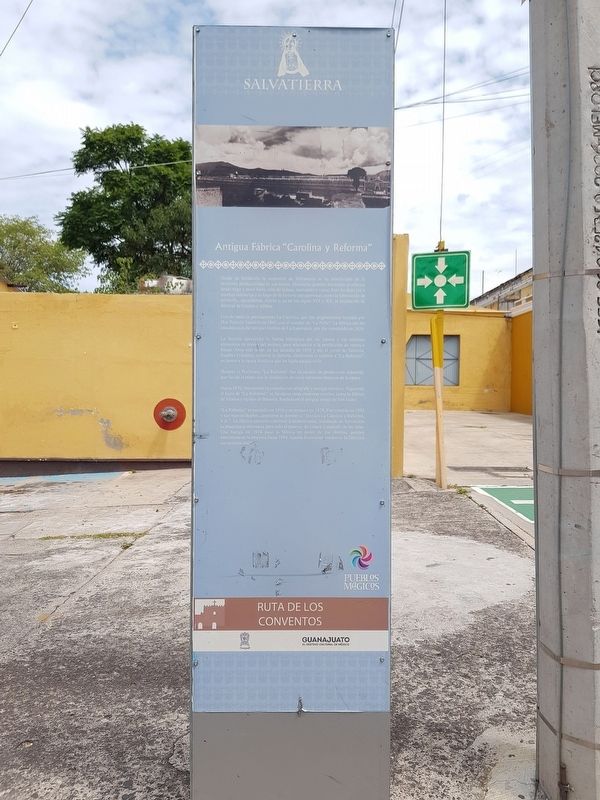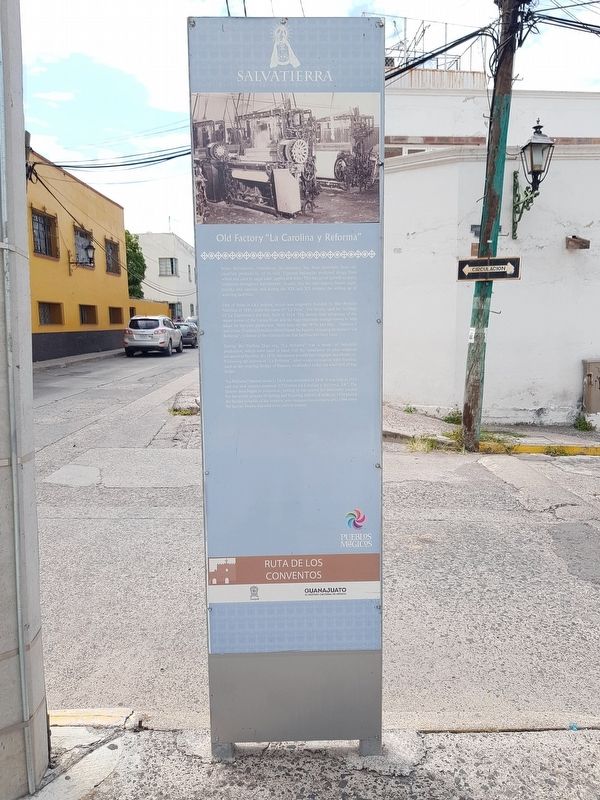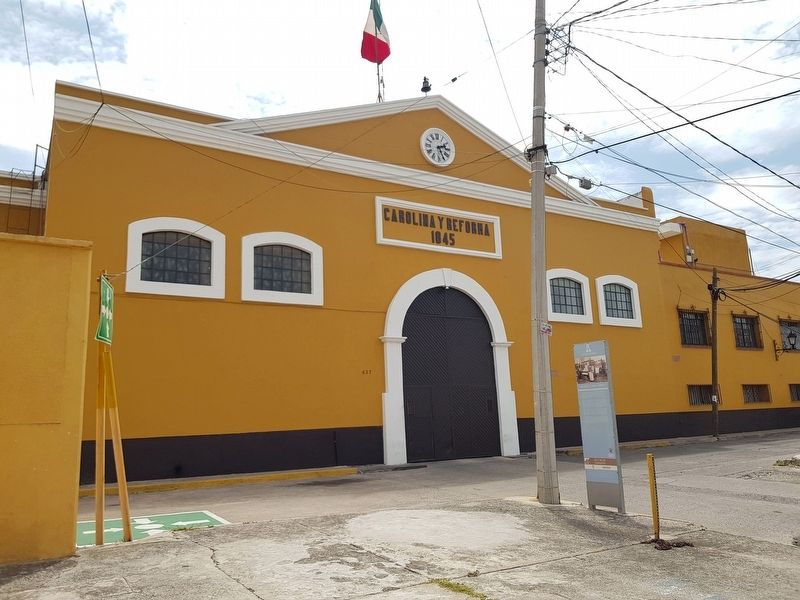Salvatierra, Guanajuato, Mexico — The Central Highlands (North America)
Old Factory “La Carolina y Reforma"
Ruta de los Conventos
Desde su fundación la economia de Salvatierra se ha beneficiado de la excelente productividad de sus tierras. Dieciocho grandes haciendas producían desde trigo y maíz hasta cana de azúcar, manzanas y vinos. Esto ha dado pie a muchas industrias a lo largo de la historia salvaterrense, como la fabricación de piloncillo, aguardiente, dulces y, ya en los siglos XIX y XX, la instalación de fábricas de hilados y tejidos.
Una de estos es precisamente La Carolina, que fue originalmente fundada por Don Patricio Valencia en 1845, con el nombre de "La Perla”. La fábrica usó las instalaciones del antiguo molino de La Esperanza, que fue construido en 1624.
La factoria aprovechó la fuerza hidráulica del rio Lerma y los enormes almacenes de piedra del molino, para adecuarlos a la producción de manta e hilaza. Años más tarde, en las décadas de 1850 y 60, el yerno de Valencia, Eusebio González, reformó la factoria, cambiando el nombre a "La Reforma", en honor a la época histórica que les habia tocado vivir.
Durante el Porfiriato, "La Reforma" fue un modelo de producción industrial, que fue de la mano con la instalación de otros adelantos técnicos de la época. Hacia 1870, Salvatierra ya contaba con telégrafo y energia eléctrica. Siguiendo el éxito de "La Reforma", se fundaron otras empresas textiles, como la fábrica de hilados y tejidos de Batanes, fundada en el antiguo obraje de San Isidro.
"La Reforma" se incendió en 1916 y se restauró en 1928. Fue vendida en 1952 y sus nuevos dueños cambiaron el nombre a "Textiles La Carolina y Reforma, S.A.". La fábrica entonces comenzó a modernizarse, instalando en Salvatierra la maquinaria necesaria para todo el proceso de tintura y acabado de las telas. Una huelga en 1974 puso la fábrica en poder de los obreros, quienes administraron la empresa hasta 1994, cuando finalmente vendieron la fábrica a sus actuales dueños.
Old Factory “La Carolina y Reforma"
Since Salvatierra's foundation, its economy has been benefited from the excellent productivity of its land. Eighteen haciendas produced things from wheat and corn to sugar cane, apples and wine. This has given growth to many industries throughout Salvatierra's history, like the ones making brown sugar, brandy, and candies; and during the XIX and XX century, the setting up of weaving factories.
One of these is La Carolina, which was originally founded by Don Patricio Valencia
in 1845, under the name of "La Perla". The factory used the facilities of La Esperanza's old mill, built in 1624. The factory took advantage of the water power of the Lerma River and the huge millstone storage rooms to help adapt for the yarn production. Years later, by the 1850s and 60s, Valencia's son in law. Eusebio González rehabilitated the factory, changing its name to "La Reforma", in honor of the historical era that had touched their lives.
During the Porfirio Díaz era, "La Reforma" was a model of industrial production, which went hand in hand with the installation of other technical advances of the time. By 1870, Salvatierra already had telegraph and electricity. Following the success of "La Reforma", other textile companies were founded, such as the weaving factory of Batanes, established in the old wool mill of San Isidro.
"La Reforma" burned down in 1916 and renovated in 1928. It was sold in 1952 and the new owners renamed it "Textiles La Carolina y Reforma, SA". The factory then began to modernize, settling in Salvatierra the machinery needed for the whole process of dyeing and finishing fabrics. A strike in 1974 placed the factory in hands of the workers, who managed the company until 1994 when the factory finally was sold to its current owners.
Topics. This historical marker is listed in these topic lists: Colonial Era
• Industry & Commerce. A significant historical year for this entry is 1845.
Location. 20° 12.424′ N, 100° 52.932′ W. Marker is in Salvatierra, Guanajuato. Marker is at the intersection of Miguel Hidalgo and Lerdo de Tejada, on the left when traveling south on Miguel Hidalgo. Touch for map. Marker is in this post office area: Salvatierra GTO 38900, Mexico. Touch for directions.
Other nearby markers. At least 8 other markers are within walking distance of this marker. Church and Former Convent of the Capuchinas (about 180 meters away, measured in a direct line); Bridge of Batanes (approx. 0.6 kilometers away); The Battle of the Bridge of Batan (approx. 0.6 kilometers away); General Emiliano Zapata (approx. 0.7 kilometers away); The Founders of Salvatierra (approx. 0.7 kilometers away); Dr. Jesús Guisa y Azevedo (approx. 0.8 kilometers away); Agustín de Carranza y Salcedo (approx. 0.8 kilometers away); Church and Former Convent of San Buenaventura (approx. one kilometer away). Touch for a list and map of all markers in Salvatierra.
Credits. This page was last revised on October 4, 2020. It was originally submitted on October 4, 2020, by J. Makali Bruton of Accra, Ghana. This page has been viewed 796 times since then and 132 times this year. Photos: 1, 2, 3. submitted on October 4, 2020, by J. Makali Bruton of Accra, Ghana.


